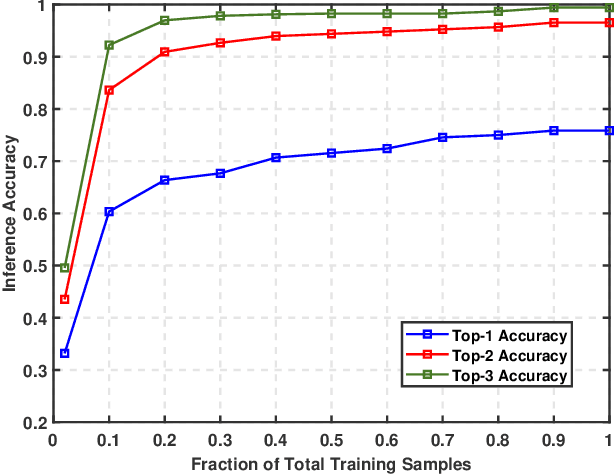Vision-Position Multi-Modal Beam Prediction Using Real Millimeter Wave Datasets
Paper and Code
Nov 15, 2021



Enabling highly-mobile millimeter wave (mmWave) and terahertz (THz) wireless communication applications requires overcoming the critical challenges associated with the large antenna arrays deployed at these systems. In particular, adjusting the narrow beams of these antenna arrays typically incurs high beam training overhead that scales with the number of antennas. To address these challenges, this paper proposes a multi-modal machine learning based approach that leverages positional and visual (camera) data collected from the wireless communication environment for fast beam prediction. The developed framework has been tested on a real-world vehicular dataset comprising practical GPS, camera, and mmWave beam training data. The results show the proposed approach achieves more than $\approx$ 75\% top-1 beam prediction accuracy and close to 100\% top-3 beam prediction accuracy in realistic communication scenarios.
 Add to Chrome
Add to Chrome Add to Firefox
Add to Firefox Add to Edge
Add to Edge